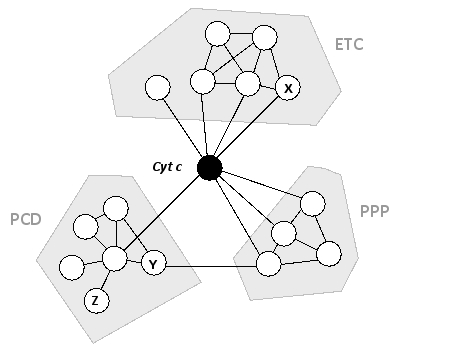Question 49
(Multiple Choice)
A simple protein interaction map is shown below for human cytochrome c (Cyt), a heme-containing protein that is normally found inside the mitochondria and is associated with the electron-transport chain (ETC) of the inner mitochondrial membrane. Under special emergency conditions, this protein can also moonlight as a signal transducer for the onset of a pathway leading to programmed cell death (PCD). As shown in the map, it also interacts with a group of phosphoprotein phosphatases (PPP) involved in cell signaling pathways. Assuming that the functions of the proteins labeled as X, Y, and Z are unknown, which of the following points can be reasonably argued from this interaction map? 
A) The protein labeled X probably functions in PCD as well as in the ETC, because it interacts with cytochrome c, which is known to be closely involved in PCD, and it also interacts with several proteins from the ETC group.
B) The protein labeled Y probably has a role in PCD, especially if its orthologs in other organisms have such a role and show a similar pattern of interactions.
C) If the proteins in the PCD group are known to form a large complex, then the protein labeled Z is likely to be the scaffold protein for that complex.
D) The protein labeled Y probably has a phosphatase function, because it interacts with the proteins of the PPP group.
E) The protein labeled Z is probably not an essential protein because it only interacts with one other protein in this map.
Answer